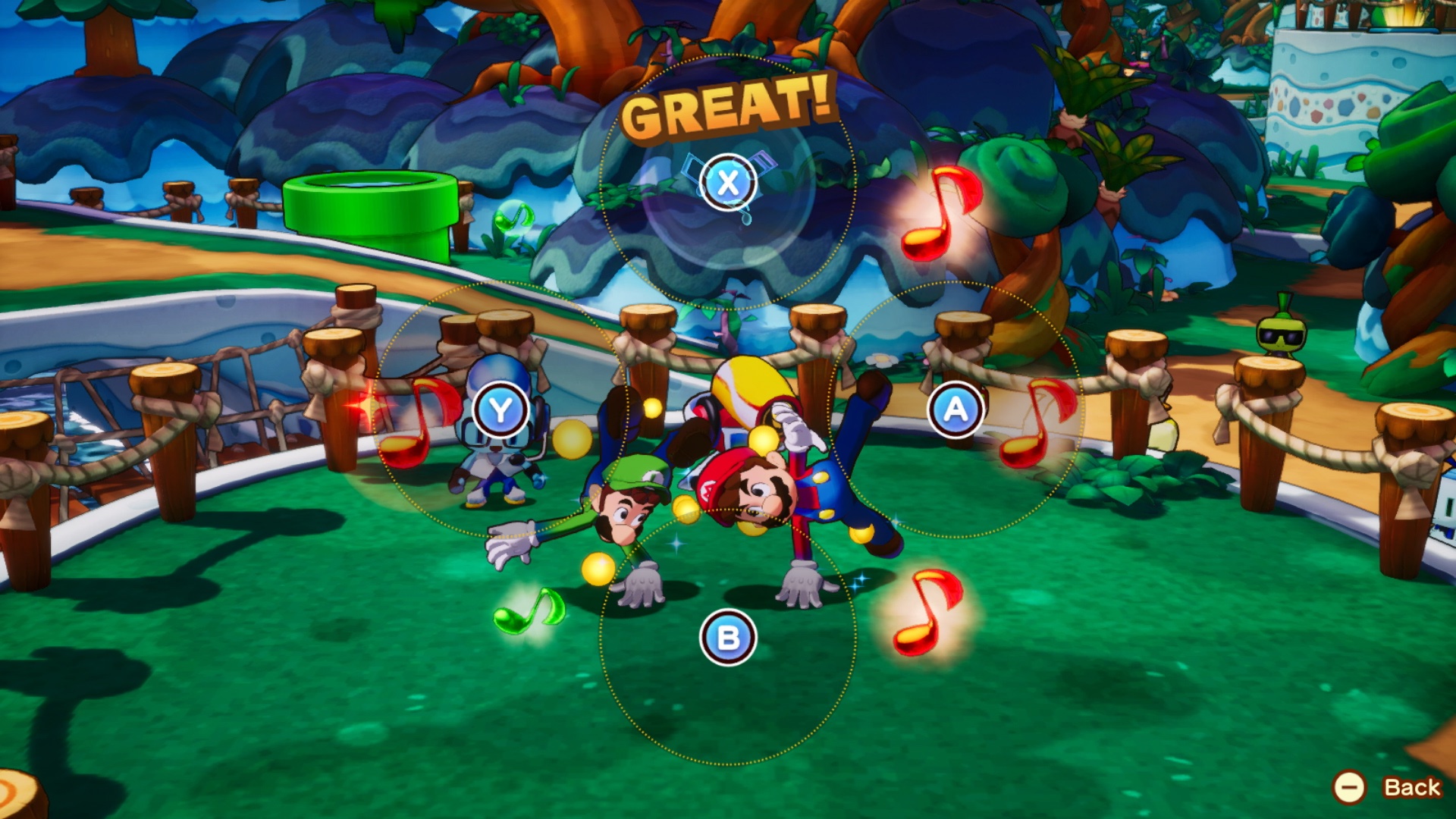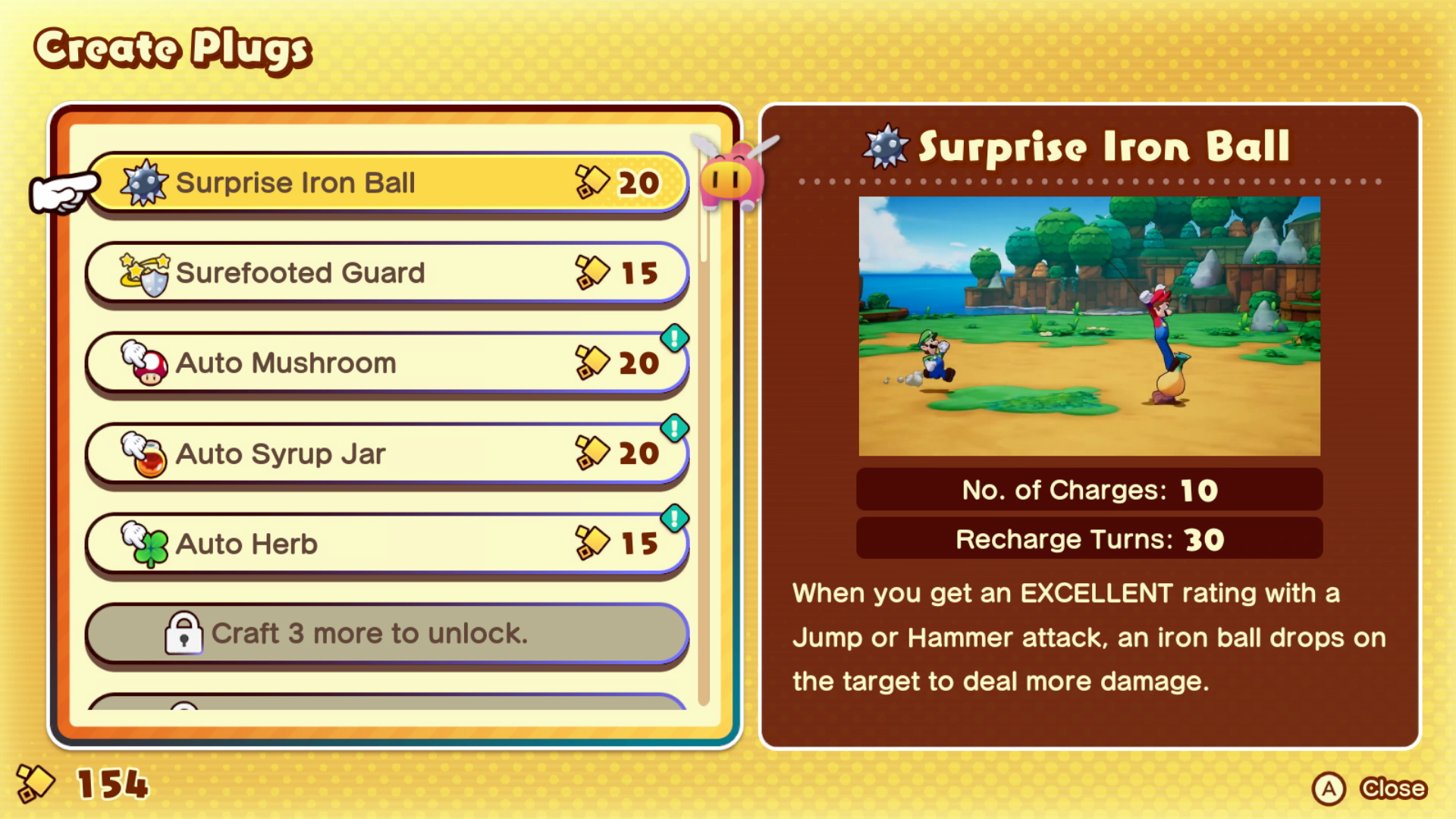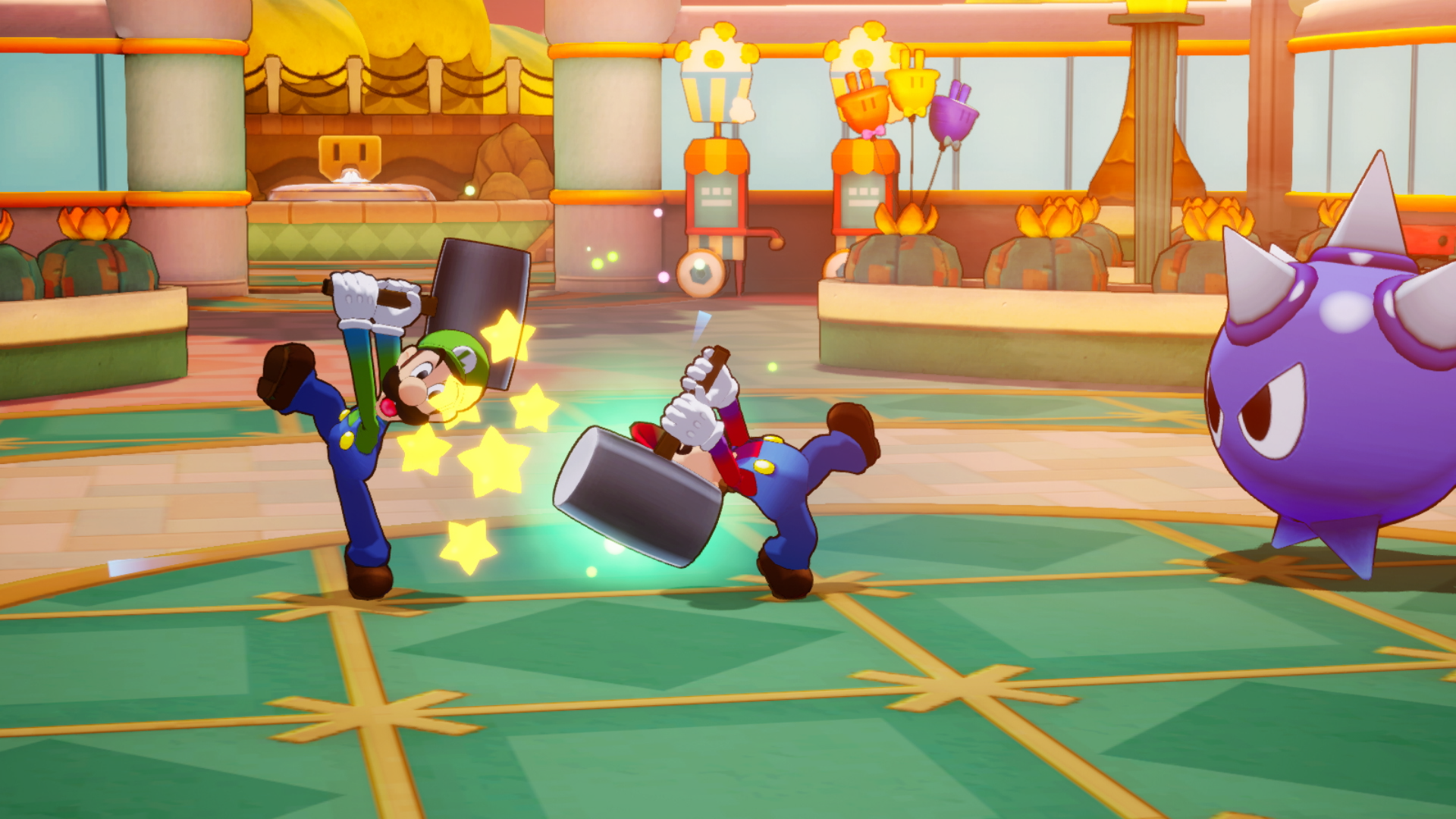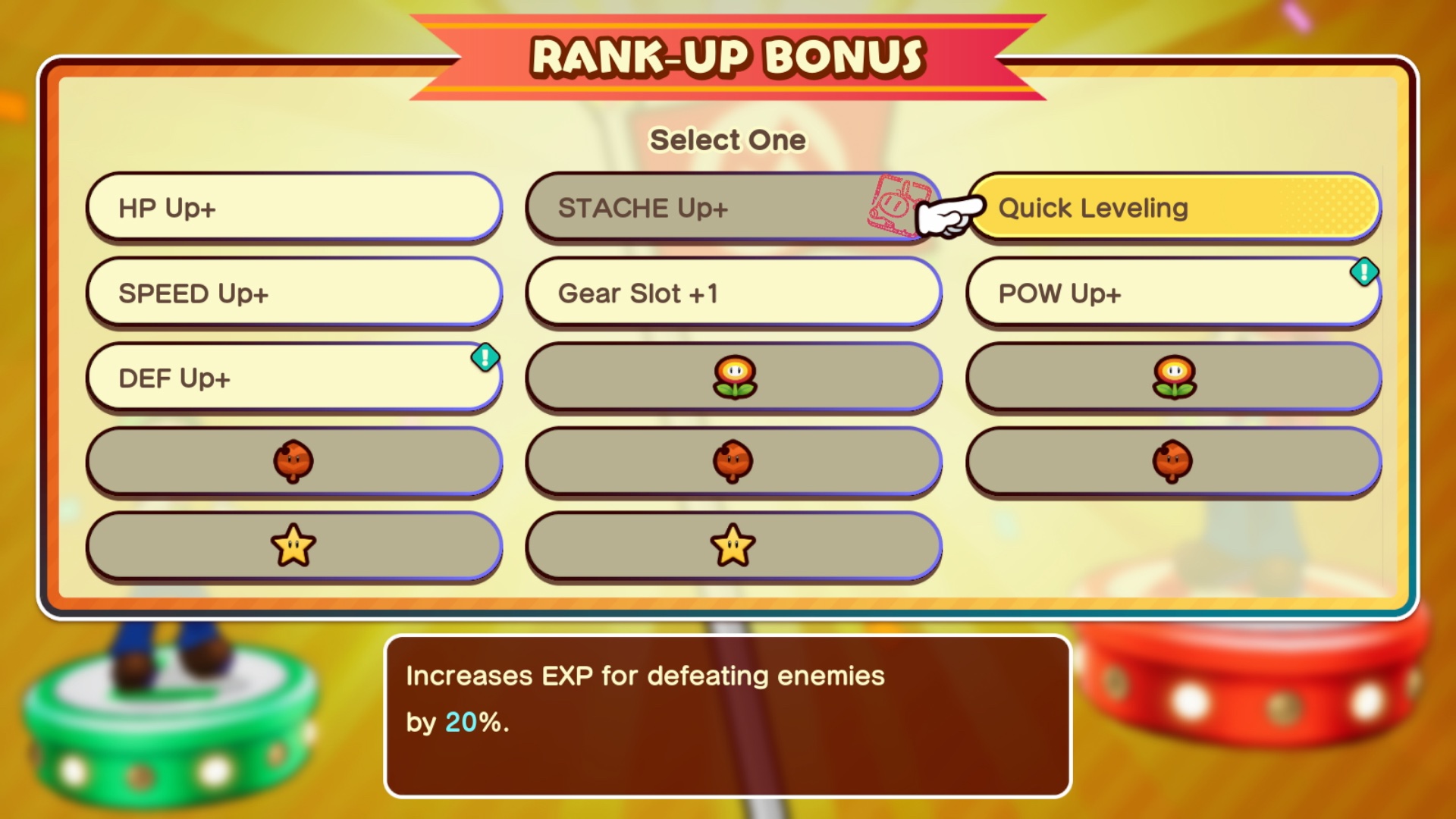Mario & Luigi’s new game feels fun and familiar, but perhaps a bit formulaic
The first new Mario & Luigi game in almost a decade is the long-awaited return to Nintendo’s wonderful sub-franchise of action RPGs. Mario & Luigi: Brotherhood brings back memories of the Mario Bros.’ light-hearted and colorful, story-driven games, plus those from other Nintendo games such as The Legend of Zelda: The Wind Waker And Ghost trails.
Even more surprising is how much Metal Gear Solid 5: The Phantom Pain Mario and Luigi’s latest outing had me glowing.
Mario & Luigi: Brotherhood sends Mario and Luigi on a mission to reconnect a fractured world known as Concordia by reconnecting the land’s disparate and disconnected islands. Mario and Luigi travel the seas of Concordia on an island of their own, a ship known as Shipshape Island. As they solve the citizens of Concordia’s problems by sailing to new islands and connecting them to Concordia’s mystical Uni-Tree, they add new crew members to Shipshape Island, full of vendors and supporters of the brothers’ cause.
In other words, Shipshape Island is the mother base of Mario & Luigi: Brotherhoodan ever-growing and more powerful structure in the ocean where the citizens of Concordia (and even some from the Mushroom Kingdom) can find a new home.
During a recent hands-on demo with Mario & Luigi: Brotherhood held by Nintendo in New York, I got to play a few hours of the upcoming Switch game. What I played felt very familiar, as a long-time fan of the Mario & Luigi game series, but with some new tactical options that should help Brotherhood feel fresh during its long journey. Mario & Luigi: Brotherhood looks to add some story choice and combat depth compared to previous entries, but also offers plenty of concessions to welcome new and younger players to the Mario & Luigi series.
One of Mario & Luigi: Brotherhood‘s new innovation is a mechanic called Luigi Logic. While Mario and Luigi usually travel in pairs, Luigi Logic sends Mario’s brother off to complete his own tasks, solving light environmental puzzles or smashing crates filled with goodies. As I explored BrotherhoodOn the different islands it was clear when Luigi Logic should be used; objects in the environment would light up and Luigi himself would give a warning if he had something to contribute.
My first destination when exploring Concordia was a location known as Twistee Island. After launching Mario and Luigi from Shipshape’s cannon – a fitting form of travel for the franchise – I landed on Twistee to find the residents in need. Together with the pig-like helper Snoutlet, I accompanied Mario and Luigi on a mission to restore the island’s life-giving tree, the Twisten Sprout. After talking to several NPCs, I learned that the Twisten Sprout needs music and a good atmosphere to thrive – and only local artist Groovemaster Dyode of Twistee Island can restore that wilted plant.
To get Dyode’s groove back and Twistee Island’s, I had to track down some hair wax for the artist. His mood was bad due to his floppy haircut, and only local hair wax dealer Spiralia could save the day. Thus began a journey to Twistee Island, where an infestation of troublesome fauna stood in Mario and Luigi’s way.
The fight against these villains takes the form of turn-based and timing-based battles. Mario and Luigi are armed with hammers and have the ability to barrage enemies, and each of these attack types has its strengths and weaknesses. Hammers are useless against flying enemies, and jump attacks are ineffective against spiky enemies. That’s been the norm for Mario & Luigi games for almost twenty years.
Mario and Luigi have many more moves at their disposal, almost all of them team-up moves that involve brothers as well as carefully timed button presses. These Bros. attacks include offensive moves that involve kicking grenades and throwing fireballs – classic Super Mario Bros. stuff. Mario & Luigi: Brotherhood However, it’s mixing things up with a new system called Battle Plugs. These power-ups can give Mario and Luigi special offensive and defensive abilities, such as the option to perform a Kaboom Attack, which sends out a shockwave that damages nearby enemies after a jump attack, and Easy Peasy Counters, which makes counterattacks almost automatic .
Players can initially only equip two Battle Plugs at a time, but can unlock more slots as they progress. Battle Plugs can also unlock new abilities with the right combination, so players are encouraged to mix and match. (Battle Plugs also have limited recharge costs and require charging, essentially forcing players to swap them in and out.)
Mario and Luigi can create Battle Plugs using a collectible known as Sprite Bulbs. The more plugs you make, the more you unlock. In my hands-on time with the game I’ve seen quite a few, including:
- Surprise Iron Ball, which drops a spiked metal ball onto the battlefield to damage enemies when you land an “Excellent” timed attack
- Surefooted Guard, which prevents an enemy from triggering or dizzying its effects
- Auto Mushroom, which automatically gives Mario or Luigi a life-restoring mushroom when they are low on health
- Anti-Spike Specialist, which provides guaranteed critical hits when using a hammer against a spiked enemy
- Anti-Flying Specialist, which provides guaranteed critical hits when using a jump attack on a flying enemy
- Dizzifying Attack, which stuns enemies and disables them for a turn
I also experienced a special combo of Battle Plugs: Iron Ka-Ball, which combines Kaboom Attack and Surprise Iron Ball to drop spiked metal balls on all enemies hit by the shockwave of a Kaboom Attack.
Outside of combat, Mario and Luigi can team up for Bros. Moves, special acrobatic movements that allow them to navigate through environments. In one, Mario and Luigi started dancing the tango and then briefly turned into a flying saucer, allowing them to cross a large gap that was too far to jump across.
After I restored Groovemaster Dyode’s hair to the perfect pompadour shape with Twistee Island hair wax – and after Mario and Luigi were tasked to dance to Dyode’s tunes in a short rhythm game – the brothers restored the island’s connection with the Uni-Tree. Doing so will give you access to the inhabitants of Twistee Island on Shipshape and a number of side quests, which I haven’t had a chance to explore but am looking forward to.
Beyond Twistee Island lies much more, including Merrygo Island, a theme park-themed location, and Lottacoins Island, an economic hub of Concordia apparently populated by depressed office workers. The game’s islands seem thematically varied, and the ocean that Mario and Luigi will explore via Shipshape looks enormous – and full of secrets.
Mario & Luigi: Brotherhood plays like a solid, if somewhat familiar-feeling, entry in the Mario & Luigi franchise. Its most enticing aspects are the depth of the combat, a branching story, and a cast of colorful, electrical socket-themed characters. I have some reservations about the way it plays – the game’s performance was a bit heavy and the combat didn’t feel as snappy as previous handheld Mario & Luigis – but I’m still excited about a new installment in the Mario & Luigi Franchise.
Mario and Luigi’s island adventure will be released for Nintendo Switch on November 7.




